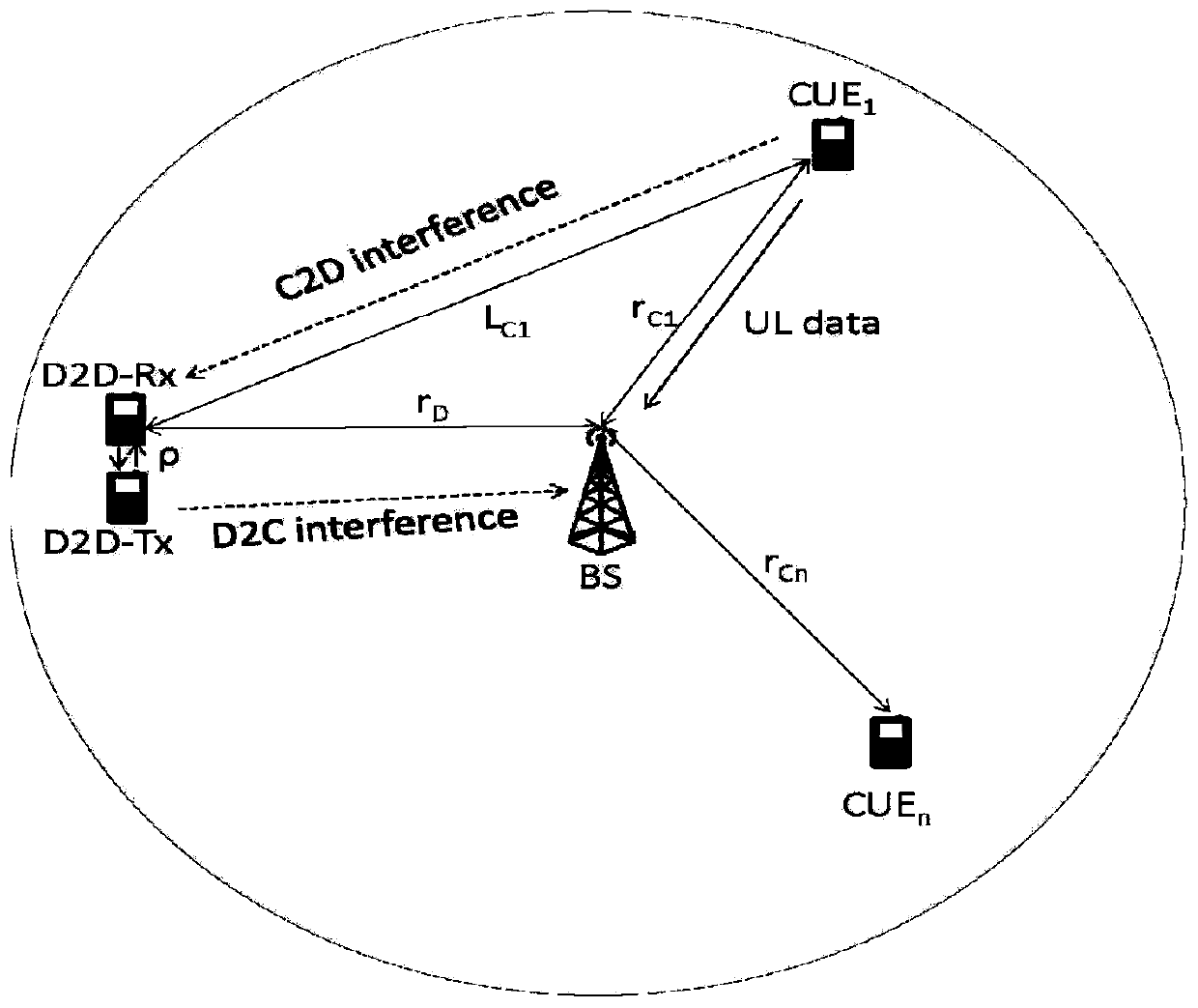A d2d communication interference coordination method based on user location information
A technology of communication interference and coordination methods, which is applied in the directions of machine-to-machine/machine-type communication services, wireless communication, electrical components, etc., which can solve the problems of difficult access to base stations, increase the signaling burden of base stations, and reduce signaling burden. , good practical effect
- Summary
- Abstract
- Description
- Claims
- Application Information
AI Technical Summary
Problems solved by technology
Method used
Image
Examples
Embodiment Construction
[0029] Below in conjunction with accompanying drawing, the present invention will be further described:
[0030] Such as figure 1 1. System model shown in
[0031] In this paper, we consider interference analysis in a single-cell scenario, such as figure 1 shown. The base station BS is located in the central area of the cell, and the cellular users and D2D users are randomly distributed in the cell. In this paper, we assume that there are a pair of D2D users and N cellular users in the cell. And it is stipulated that a D2D user can only reuse resources of one cellular user at most. exist figure 1 Medium, D2D-T X Indicates the D2D transmitter, D2D-R X Indicates the D2D receiving end, and the nth cellular user is denoted as CUE n , Expressed as the distance from the nth cellular user to the base station, r D Expressed as the distance from the D2D transmitter to the base station, Denoted as cellular user CUE 1 The distance to the D2D receiving end, ρ is expressed ...
PUM
 Login to View More
Login to View More Abstract
Description
Claims
Application Information
 Login to View More
Login to View More - R&D Engineer
- R&D Manager
- IP Professional
- Industry Leading Data Capabilities
- Powerful AI technology
- Patent DNA Extraction
Browse by: Latest US Patents, China's latest patents, Technical Efficacy Thesaurus, Application Domain, Technology Topic, Popular Technical Reports.
© 2024 PatSnap. All rights reserved.Legal|Privacy policy|Modern Slavery Act Transparency Statement|Sitemap|About US| Contact US: help@patsnap.com










